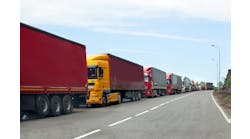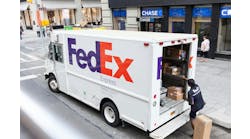| New York/New Jersey ports cope with growth |
Coming off a stunning year in 2003, the Port Authority of New York & New Jersey (http://www.portnynj.com) has a number of initiatives underway to improve container capacity and container handling. Container throughput surpassed 4 million TEUs for the first time, and 2003 was the first year commodity values were over $100 billion.
Container traffic increased by 8.5% in 2003, and total loaded TEUs were up 8%, accounting for 69% of the containers handled through the port. On the other hand, rail cargoes were limited to 1.1% last year because of capacity constraints, admits Richard Larrabee, port commerce director.
Rail expansion includes an interim facility at the Port Newark Container Terminal that started last year. Staten Island's on-dock facility will be linked to the rest of the rail system, and should be completed by 2005.
The first phase of the further development of ExpressRail includes eight tracks. The second phase will take the number of tracks to 18, and should go beyond the current capital plan that extends to 2008.
The ExpressRail facility was designed to handle about 150,000 containers per year, but in 2003 it handled 232,000. Larrabee says the Port focused on keeping service levels high to avoid having cargoes diverted elsewhere. He expects a 7%-8% increase in rail each year for the next 10 or 15 years. The Port's goal is to grow its total rail business from 11% to about 25% of total volume.
The Port is very truck dependent, Larrabee adds, moving 84% of all containers out of the port by truck.
Meanwhile, barge service started last year between the Port and Albany, N.Y. Dedicated rail and barge services are designed to take that freight off the roads and help reduce congestion.
Short-sea shipping will further reduce the domestic containers and other cargo moving out of the Port by truck. Interest is increasing, but short-sea shipping will still take time to develop.
Larrabee is confident the shifts in mode won't contribute to more congestion. On the water side, he points to the many dredging projects, ferries and pleasure/entertainment users of the Port waterways, saying the port handled 5,200 vessels in 2003 without incident. He believes any increased capacity from the various initiatives will likewise be absorbed into the operation.
Even increased demand for Customs and Border Protection compliance and inspections shouldn't create problems. A new scanner for radiation detection scans containers as they leave the terminal by truck. It's a non-intrusive system, explains Larrabee, and has had minimal effect on the flow of goods through the port, he points out. LT
Feedback on this article?
© Want to use this article?
Click here for options!
Copyright© 2004 Penton Media, Inc.


